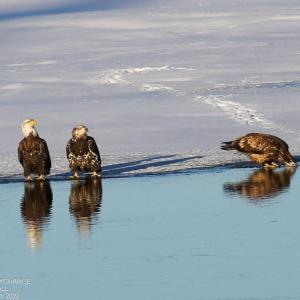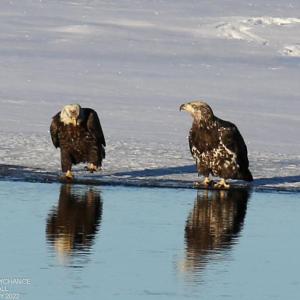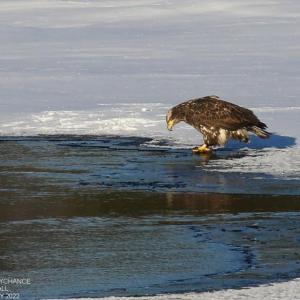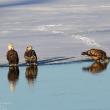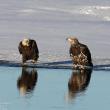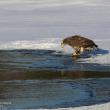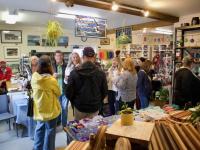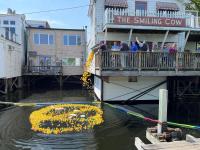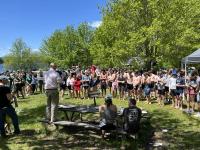Eagles on Ice
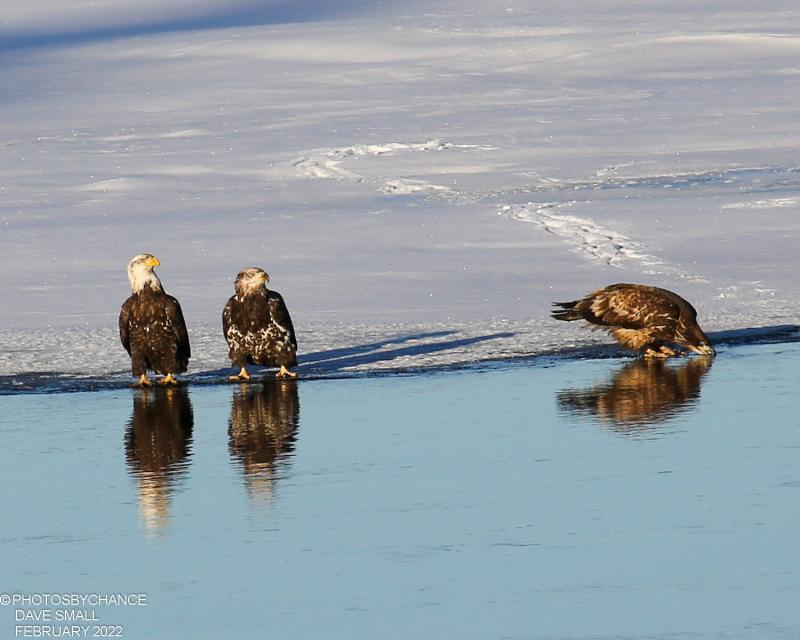 Bald eagles awaiting an opportune moment at the edge of the ice. Courtesy of Dave Small
Bald eagles awaiting an opportune moment at the edge of the ice. Courtesy of Dave Small
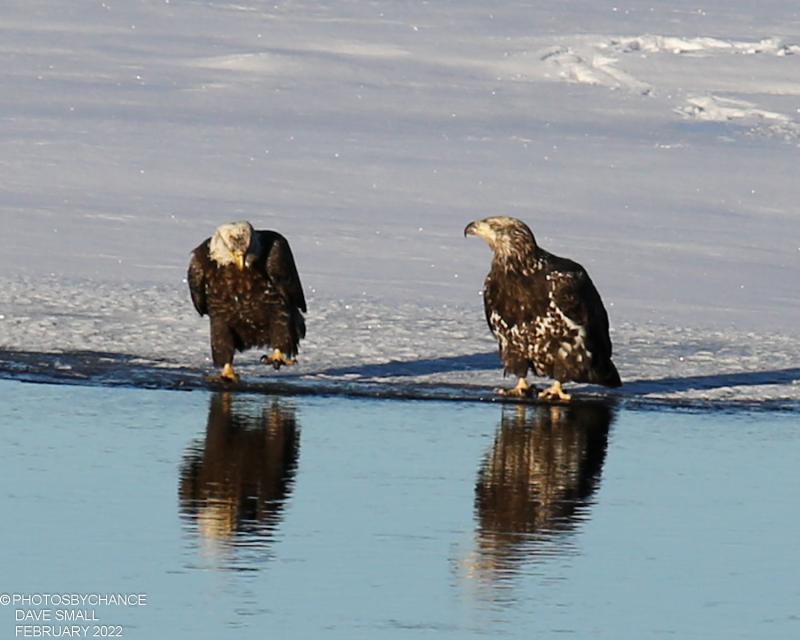 Bald eagles are kleptoparasites, meaning they look for opportunities to steal food from other birds and animals. Courtesy of Dave Small
Bald eagles are kleptoparasites, meaning they look for opportunities to steal food from other birds and animals. Courtesy of Dave Small
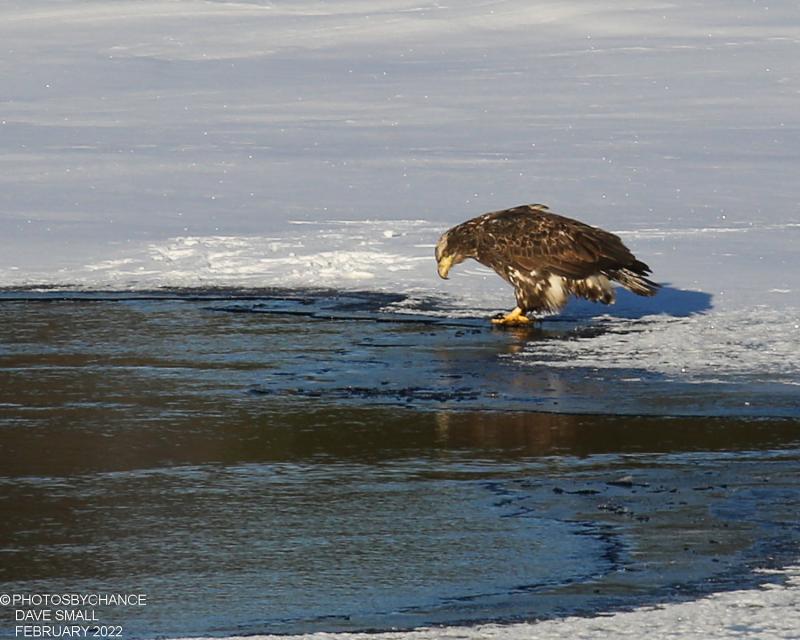 Look for bald eagles along the edge of the ice in Maine’s large rivers. Chances are, they’ll be looking for an opportunity to grab a free meal. Courtesy of Dave Small
Look for bald eagles along the edge of the ice in Maine’s large rivers. Chances are, they’ll be looking for an opportunity to grab a free meal. Courtesy of Dave Small
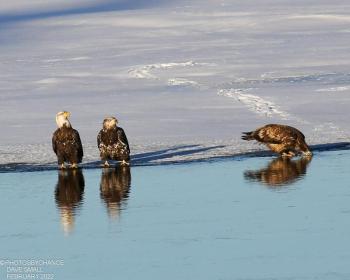 Bald eagles awaiting an opportune moment at the edge of the ice. Courtesy of Dave Small
Bald eagles awaiting an opportune moment at the edge of the ice. Courtesy of Dave Small
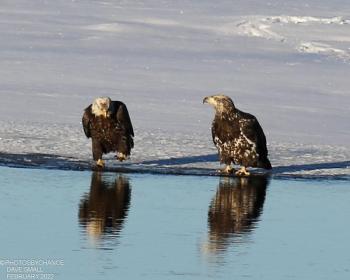 Bald eagles are kleptoparasites, meaning they look for opportunities to steal food from other birds and animals. Courtesy of Dave Small
Bald eagles are kleptoparasites, meaning they look for opportunities to steal food from other birds and animals. Courtesy of Dave Small
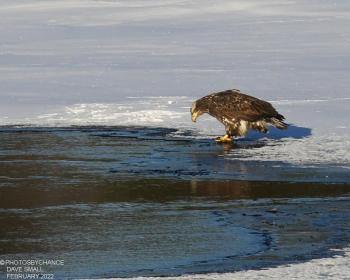 Look for bald eagles along the edge of the ice in Maine’s large rivers. Chances are, they’ll be looking for an opportunity to grab a free meal. Courtesy of Dave Small
Look for bald eagles along the edge of the ice in Maine’s large rivers. Chances are, they’ll be looking for an opportunity to grab a free meal. Courtesy of Dave Small
While it’s true that a certain Philadelphia-based football team is on ice after a recent playoff collapse against the Tampa Bay Buccaneers, the inspiration for this column comes from the real thing!
The colder temperatures have finally added a layer of ice over much of the Kennebec River. With that frozen water has come the welcome sight of bald eagles perching on the edge of the patches of open water found at the mouths of incoming streams and in areas where the water flows faster.
The eagles come in all ages. Adults with their brown bodies and white heads and tails are usually outnumbered by the mottled brown immatures that take four to five years before they become adorned in striking adult plumage. Whatever age, though, they are an amazing sight showcased against the bright white of the ice-covered river.
But what are they doing there?
Fishing is not too likely—the water is deep and faster-flowing along the edge of the ice—not the best places for fish to be near the surface in winter and in broad daylight.
On the other hand, bald eagles are well-known kleptoparasites, a fancy name for animals that steal food from other animals. Common mergansers – their long, thin, serrated bills perfect for catching slippery fish – feed in the patches of open water on otherwise ice-covered rivers. The bright white males and more subtle gray females are a common sight on big Maine rivers like the Kennebec and Penobscot. When they bring a fish to the surface and don’t swallow it immediately, their valuable dinner can attract pirates that want to steal it, including other mergansers, gulls, and – you guessed it – bald eagles.
Bald eagles have been documented stealing all sorts of food from other birds. At dumps, they often sit around the edges on the ground or in trees waiting patiently while gulls dig vigorously through the refuse. When a gull finds something “delicious,” it will typically fly off with it quickly, since just about every other gull digging in the garbage nearby will try to snatch it away. Once it flies off, the gulls will give chase. And if a raven spots this, it, too, will try and zoom in for an easy meal.
This is the moment the eagle has been waiting for. Sometimes, it’s the moment that two or three eagles have been waiting for. If they swoop down into the chase, more often than not, the hapless food-finding bird will drop its meal rather than take a chance on getting attacked itself by an eagle. The eagle will drop down, grab the food item, and take it away to a safe perch and chow down.
Bald eagles have even been documented stealing fish from mammals. They’ve been seen taking fish from harbor seals, harbor porpoises, and even from sea otters (in Alaska). When ice fishermen throw unwanted fish or the guts of a cleaned fish out onto the ice, the eagles probably think they are stealing it from humans as well.
And interestingly enough, human hunting societies are known to have used this tactic – watching predators take game and then going in groups and scaring away the predators to take the prey for themselves.
Next time you’re traveling along the Kennebec or other large Maine river, keep an eye out for the edge of the ice. Chances are, you’ll see piracy in action!
Jeffrey V. Wells, Ph.D., is a Fellow of the Cornell Lab of Ornithology and Vice President of Boreal Conservation for National Audubon. Dr. Wells is one of the nation's leading bird experts and conservation biologists. He is a coauthor of the seminal “Birds of Maine” book and author of the “Birder’s Conservation Handbook.” His grandfather, the late John Chase, was a columnist for the Boothbay Register for many years. Allison Childs Wells, formerly of the Cornell Lab of Ornithology, is a senior director at the Natural Resources Council of Maine, a nonprofit membership organization working statewide to protect the nature of Maine. Both are widely published natural history writers and are the authors of the popular books, “Maine’s Favorite Birds” (Tilbury House) and “Birds of Aruba, Bonaire, and Curaçao: A Site and Field Guide,” (Cornell University Press).

